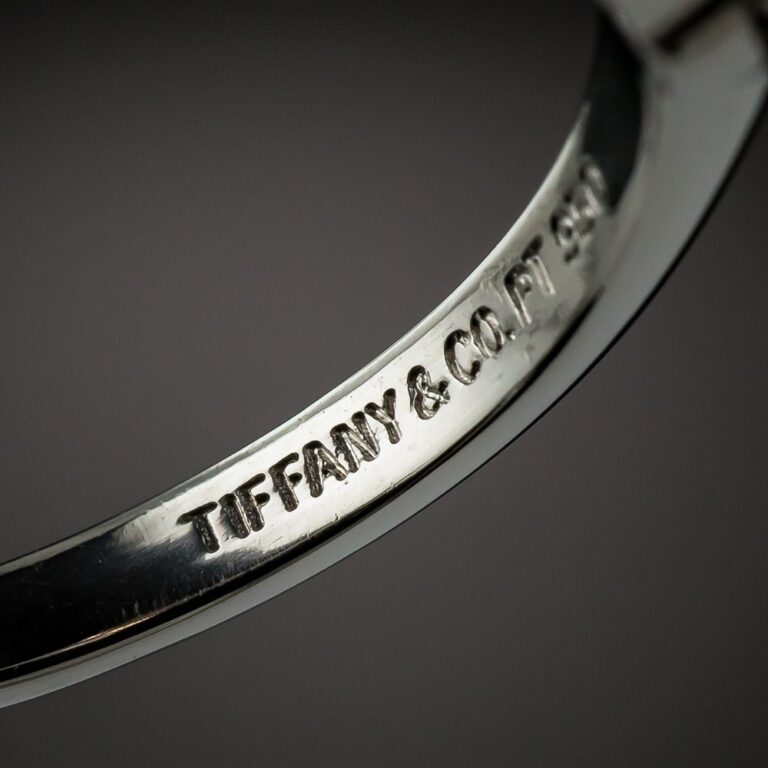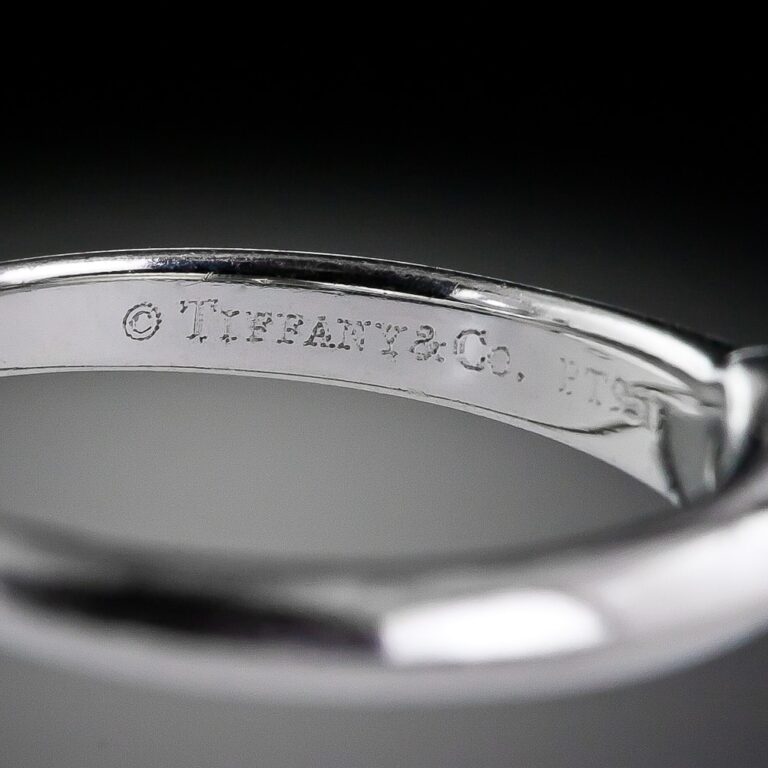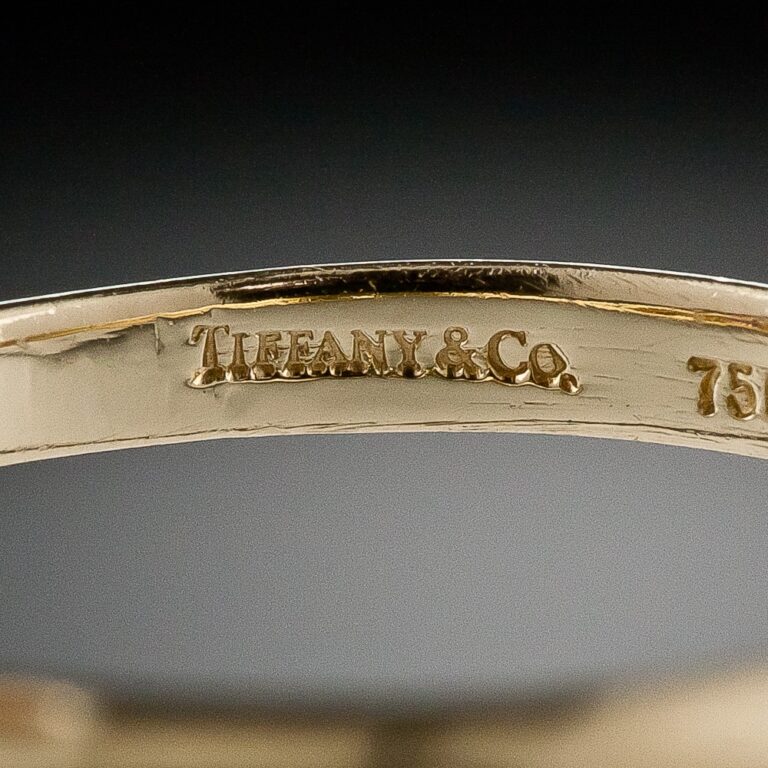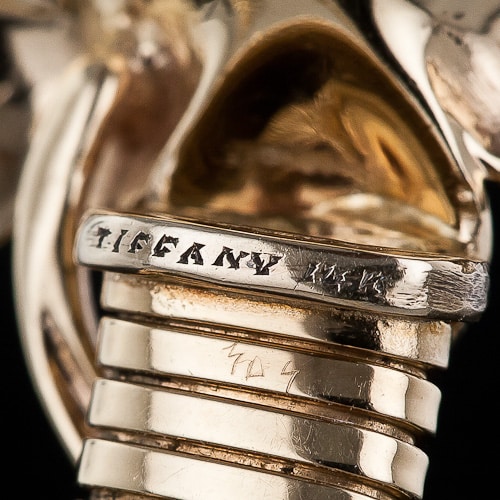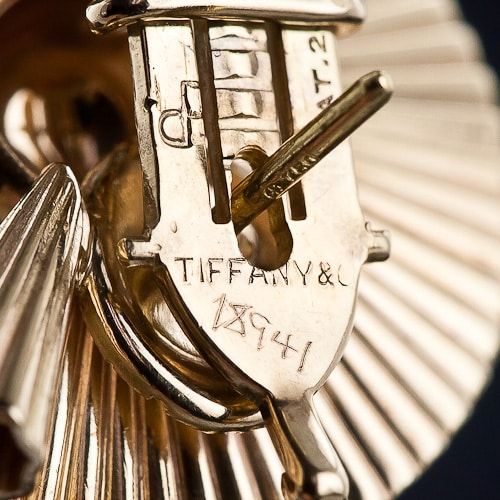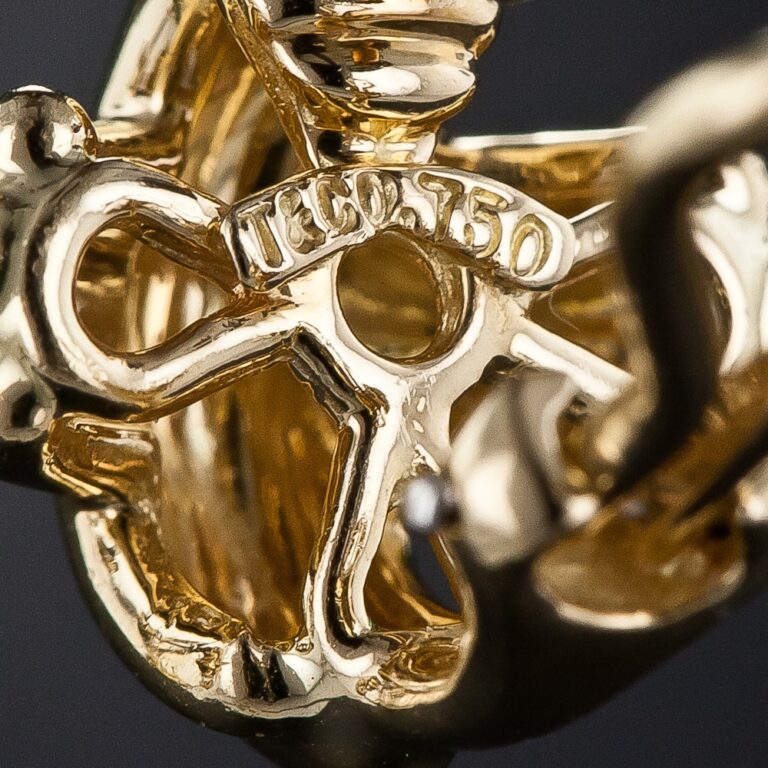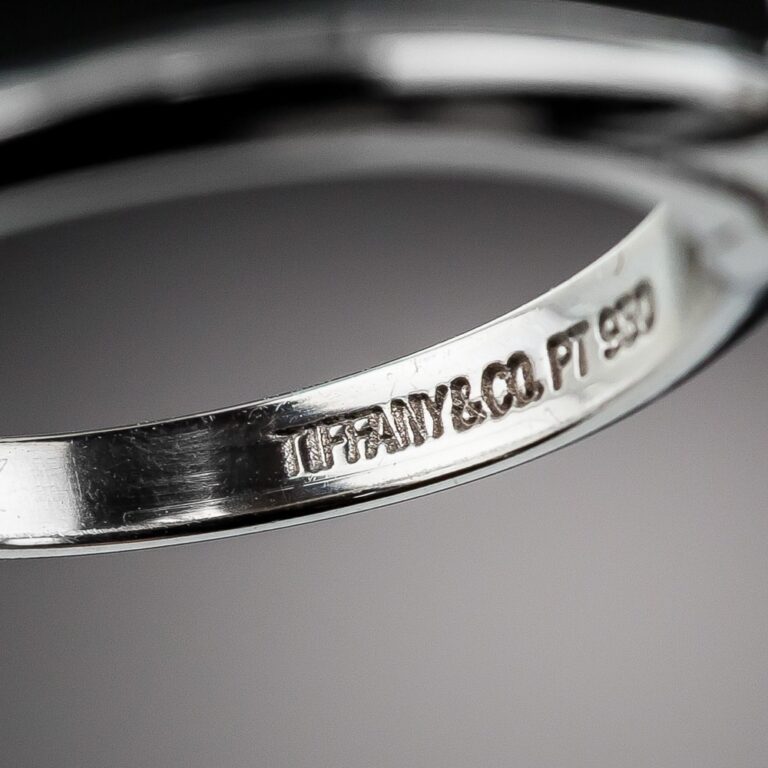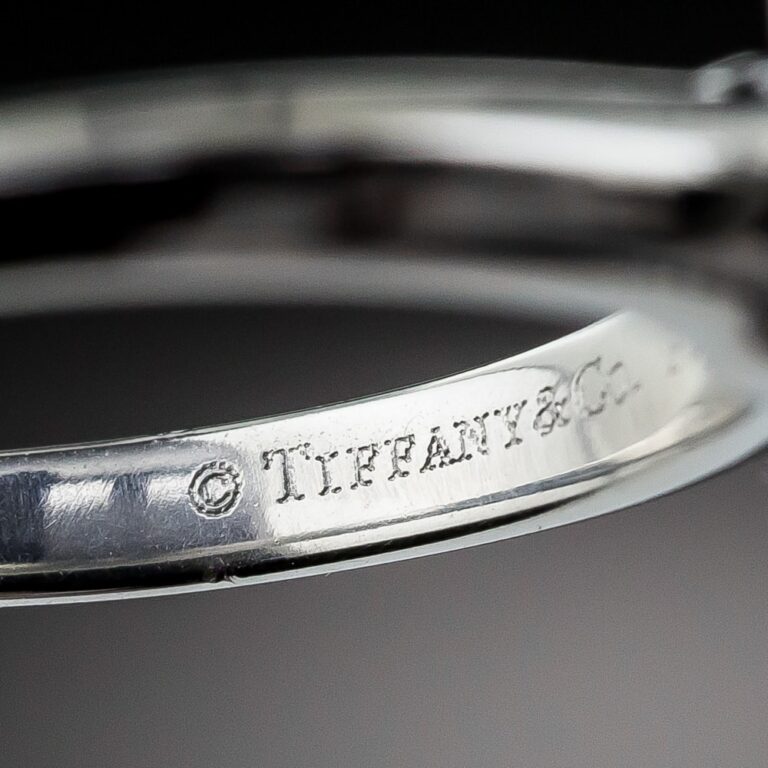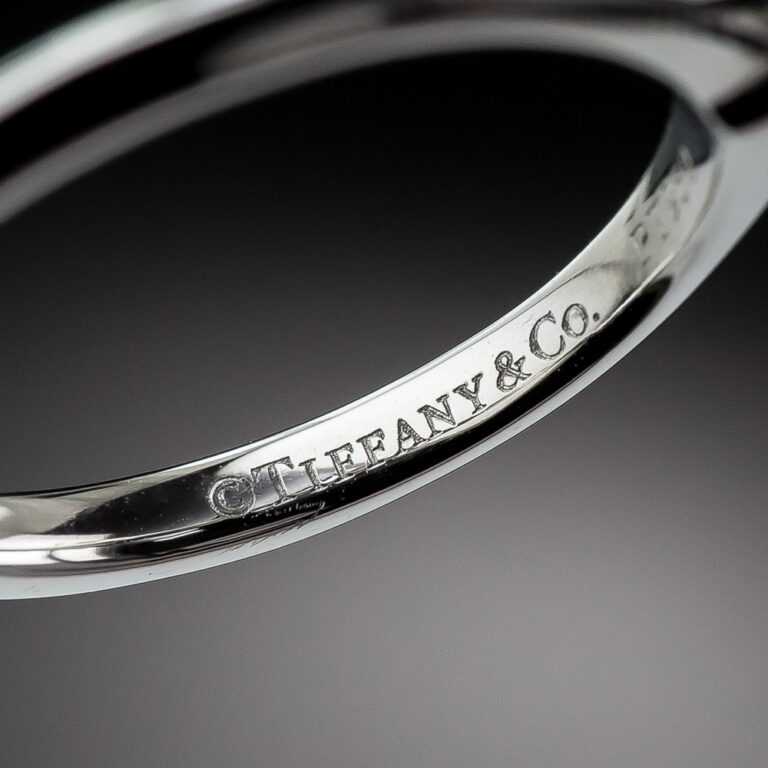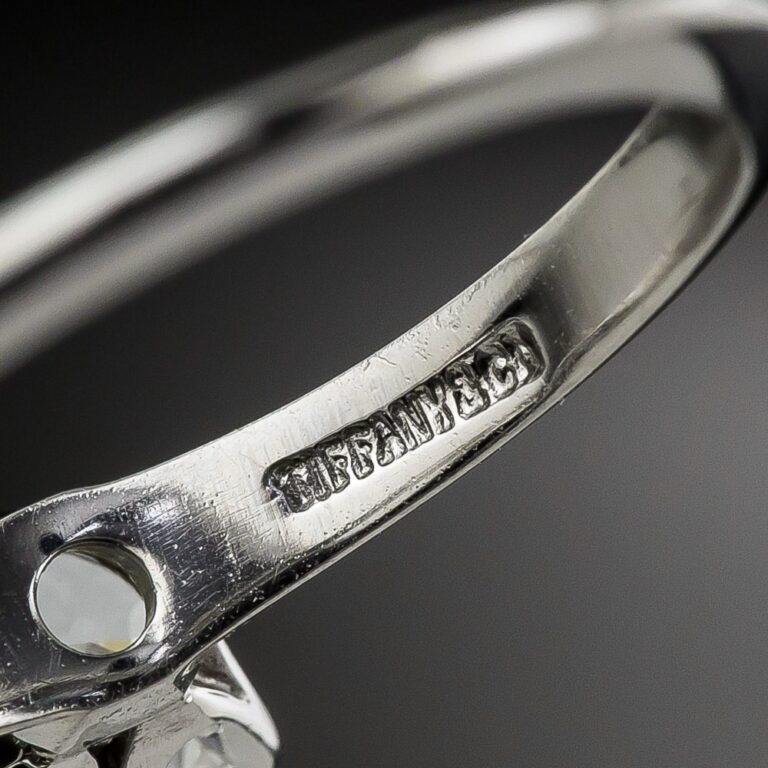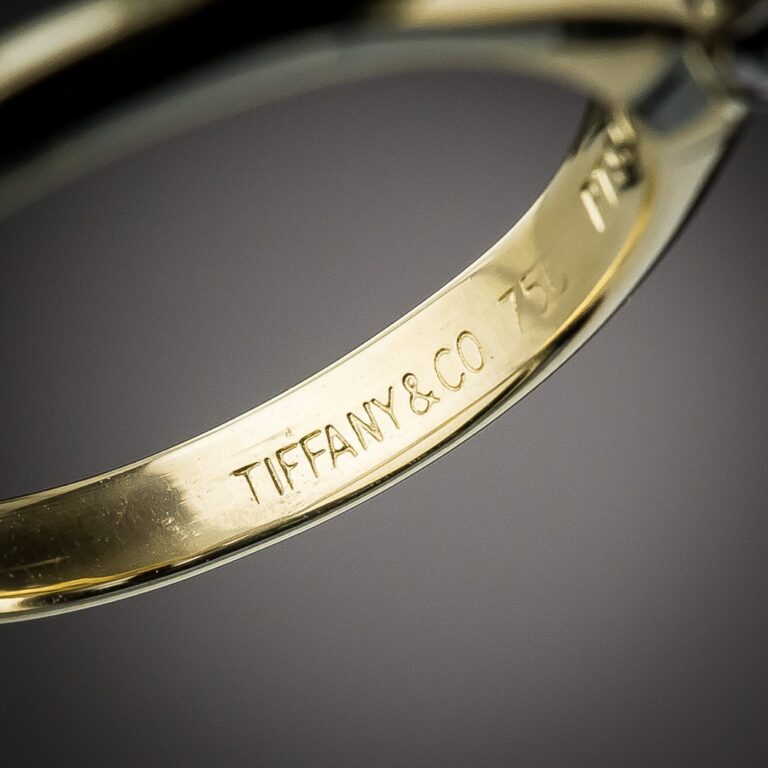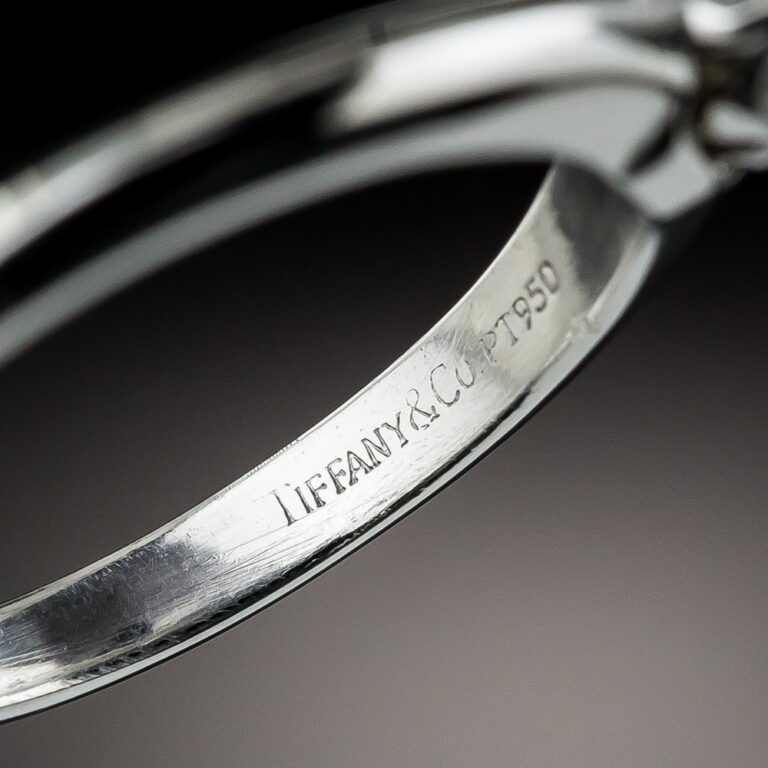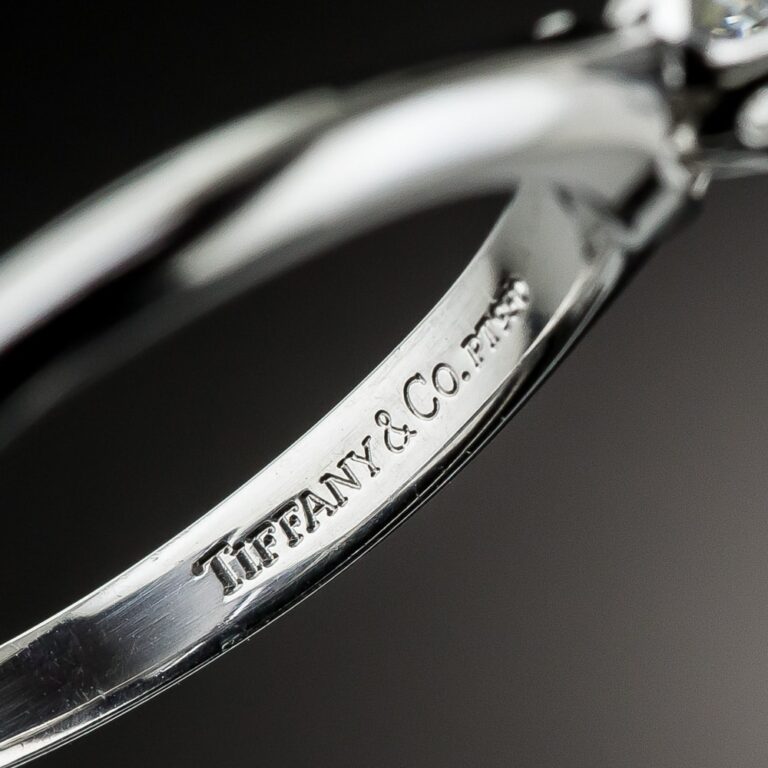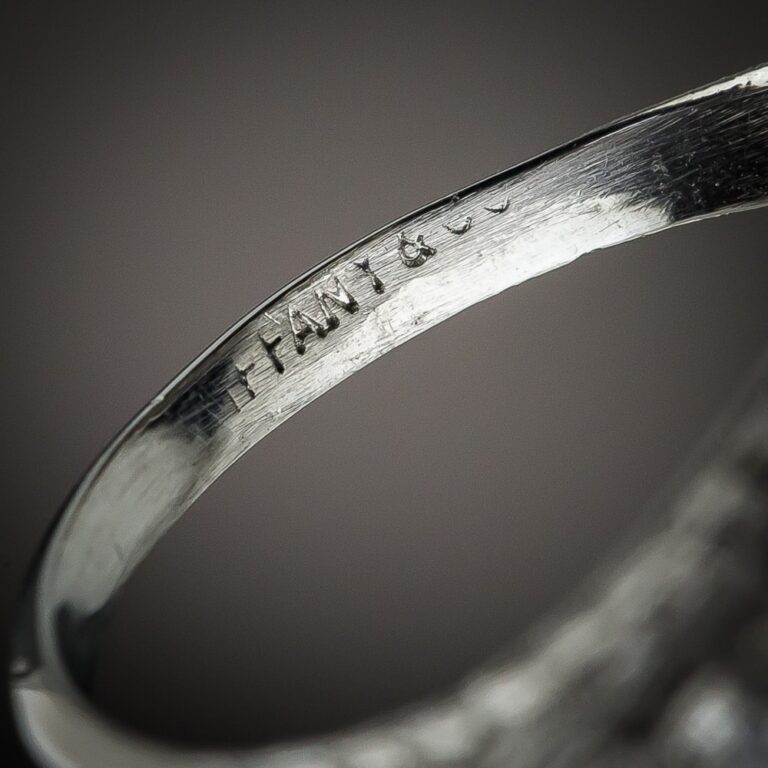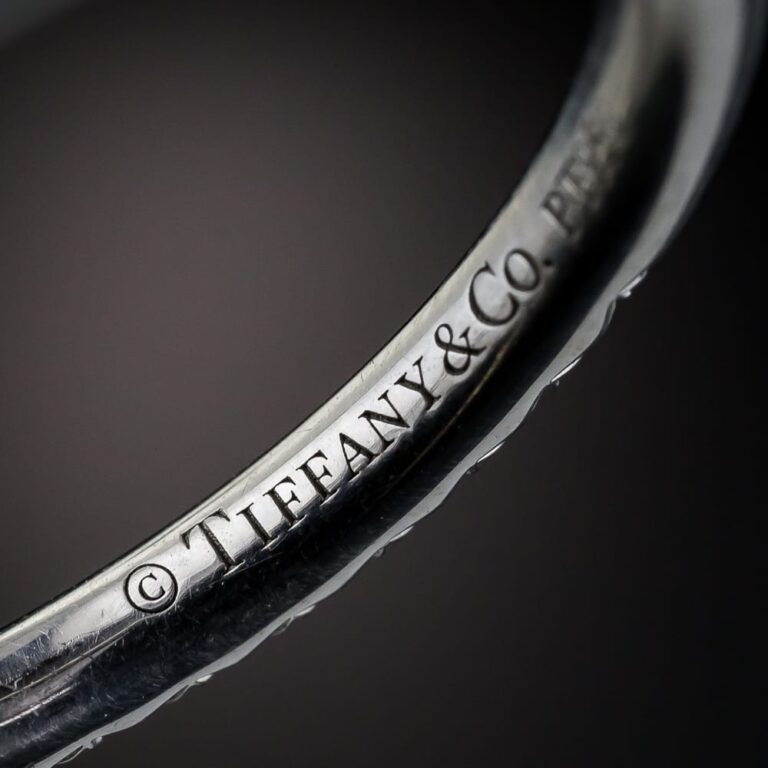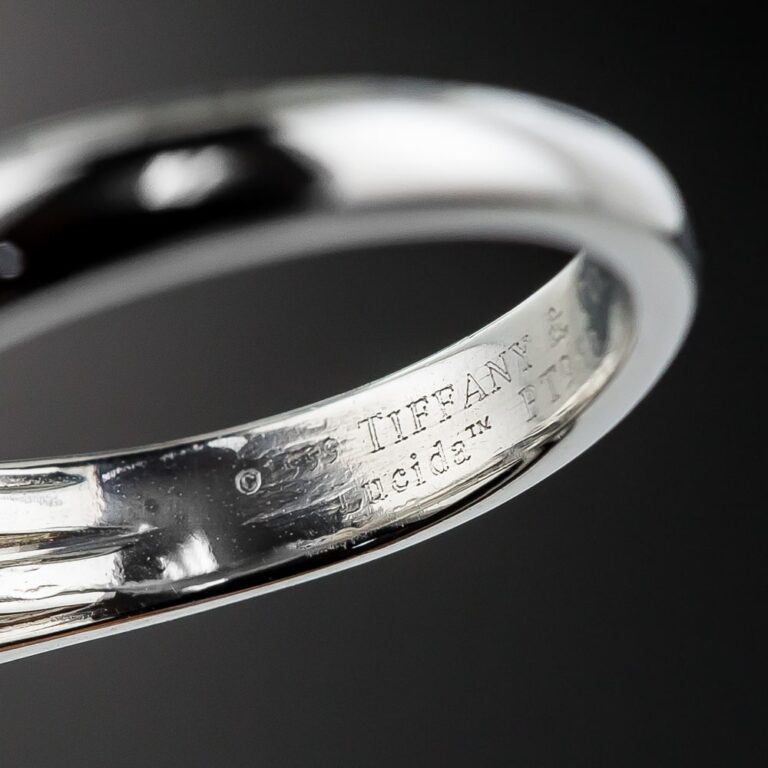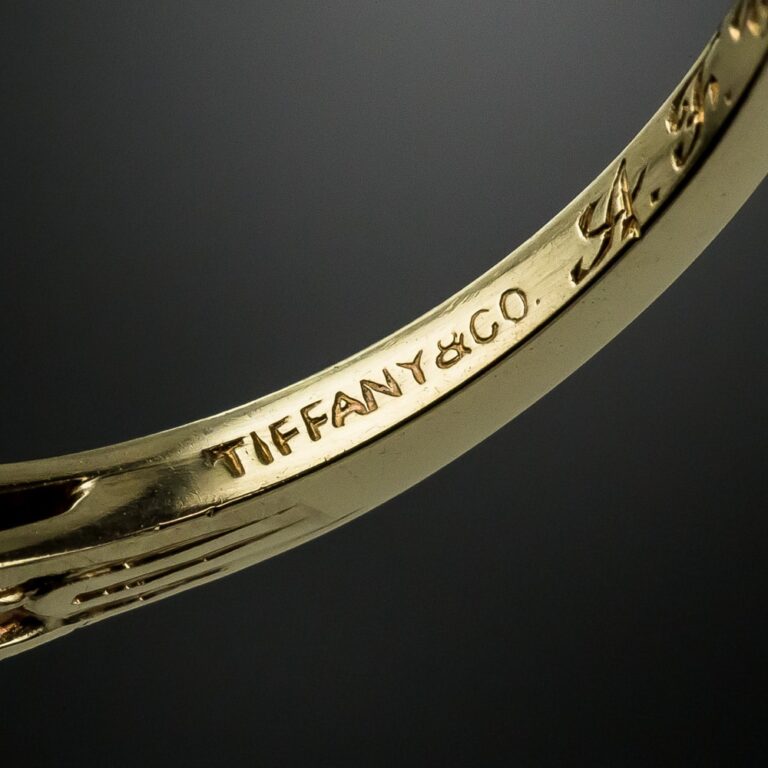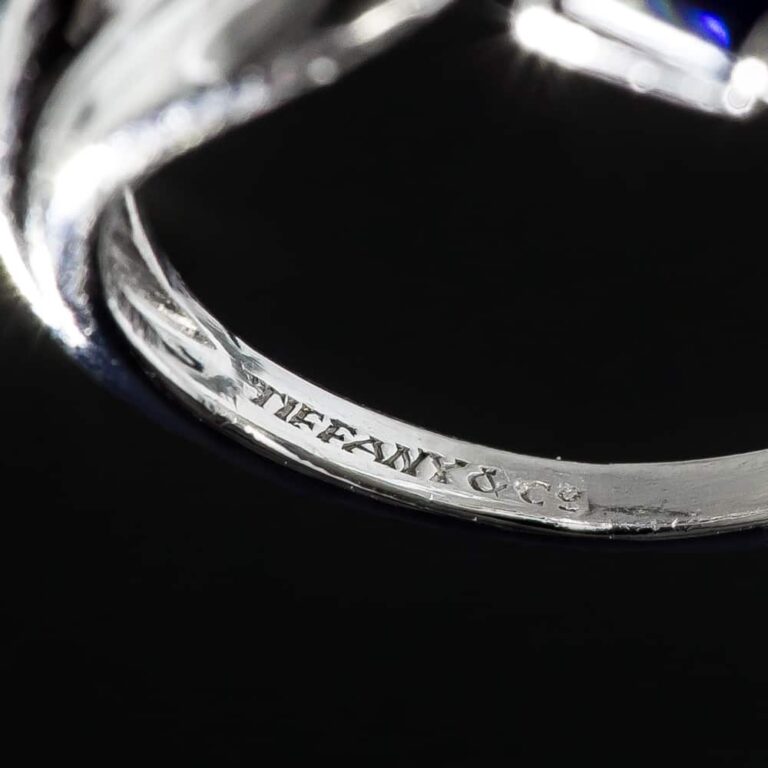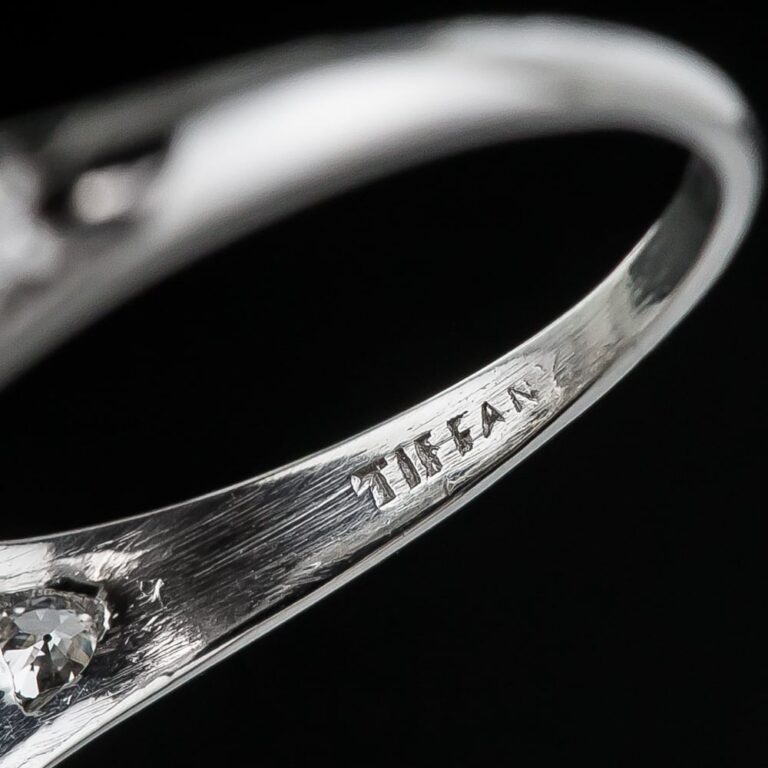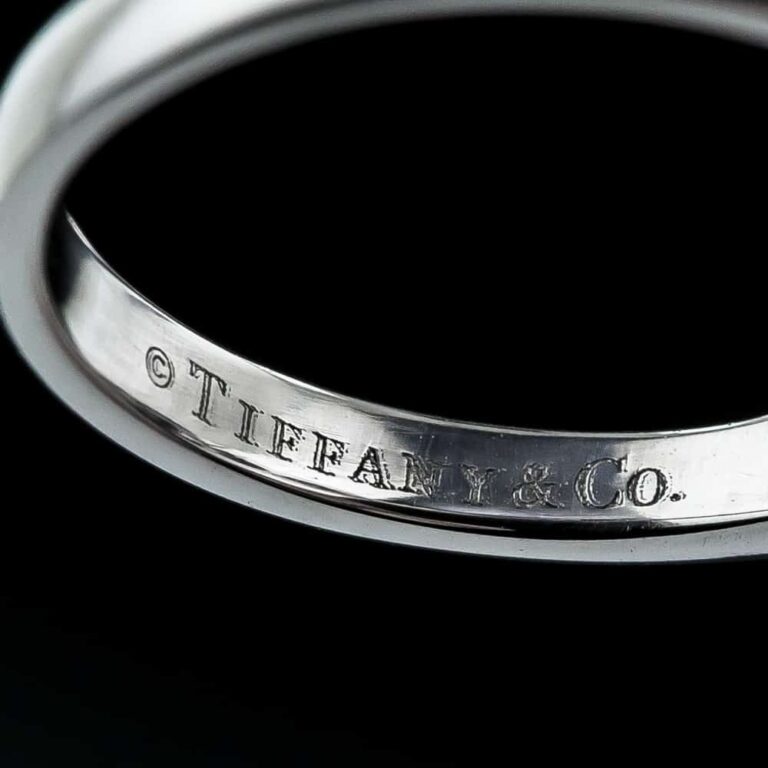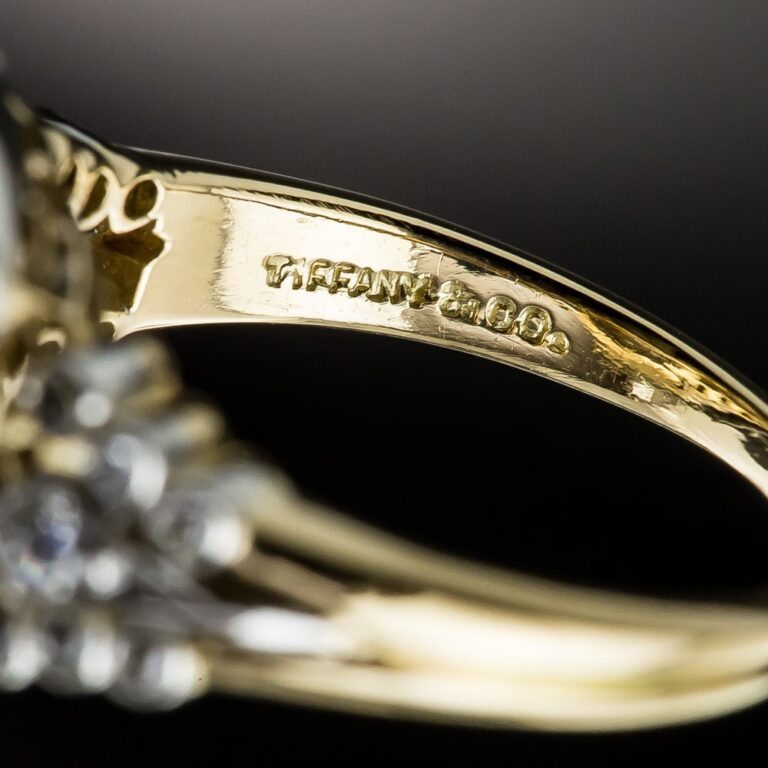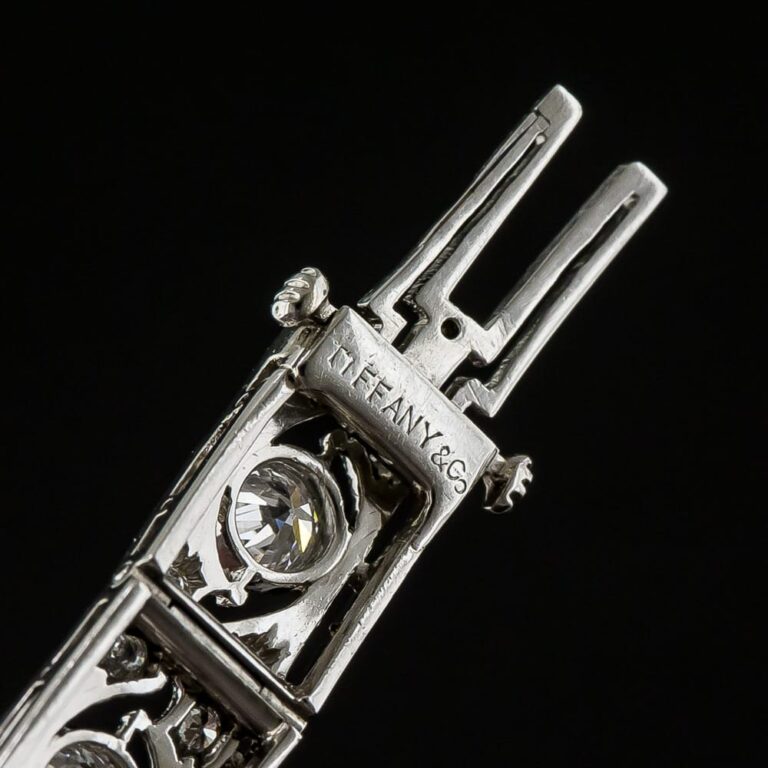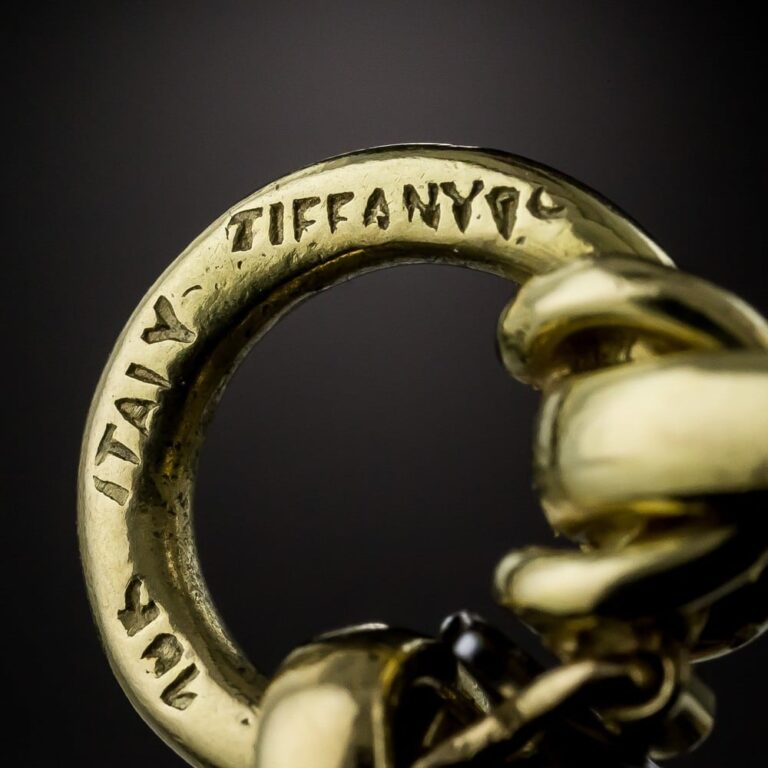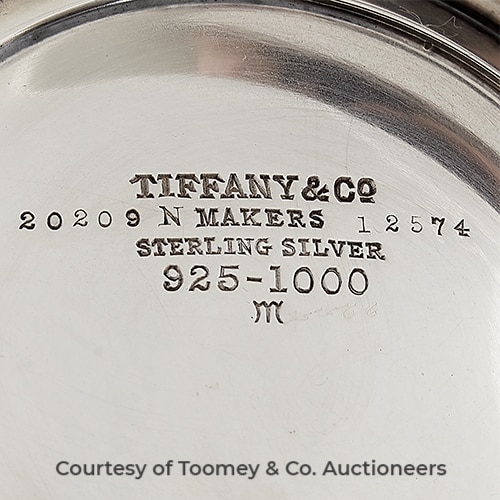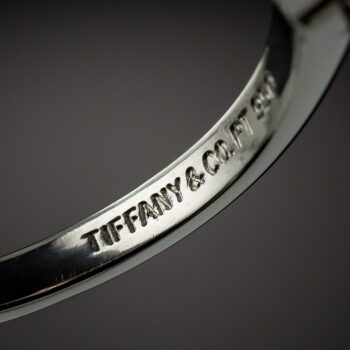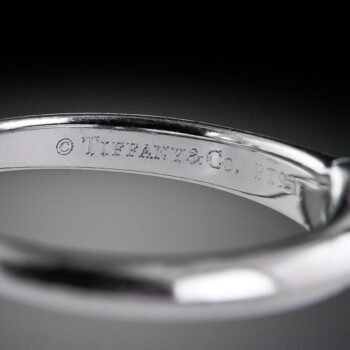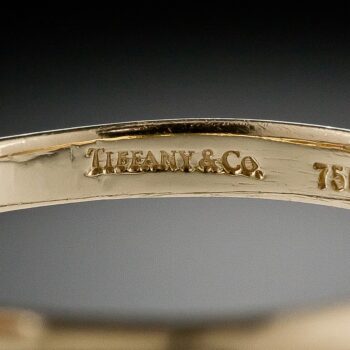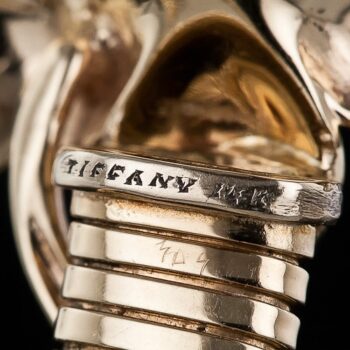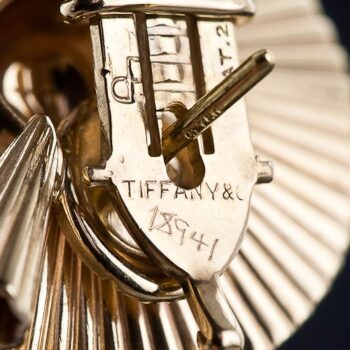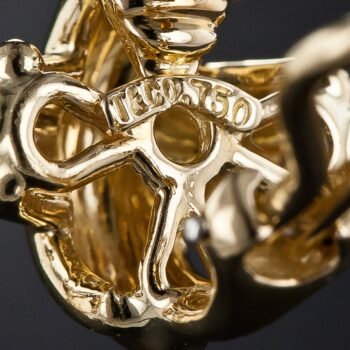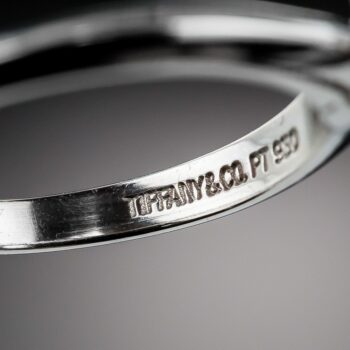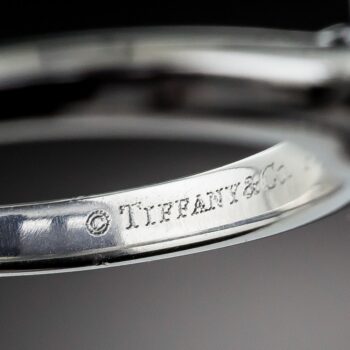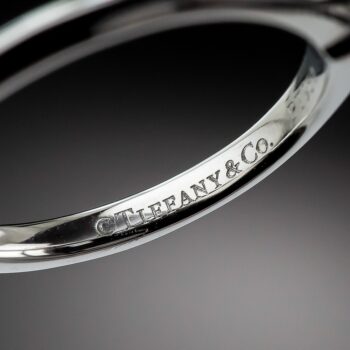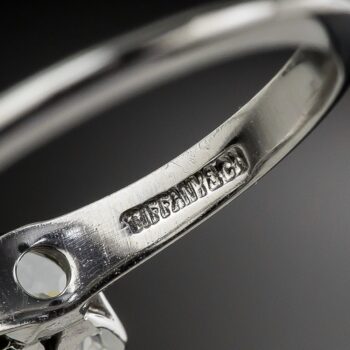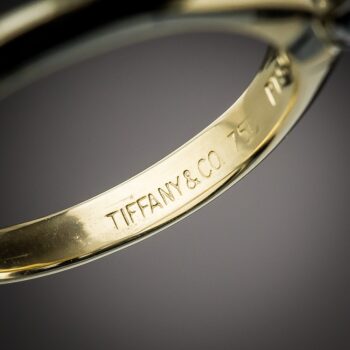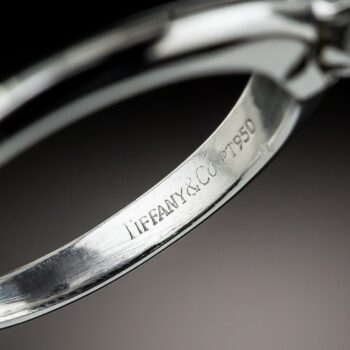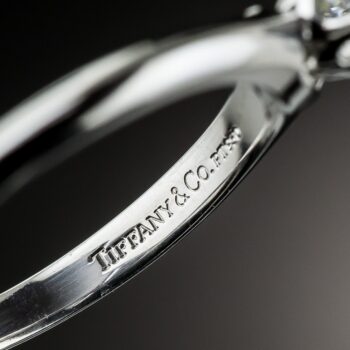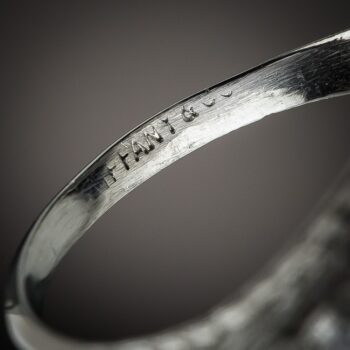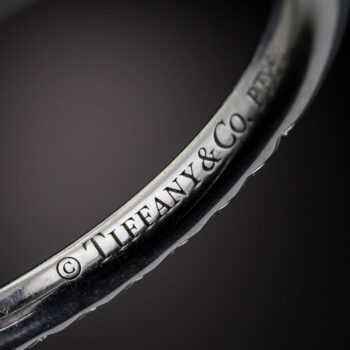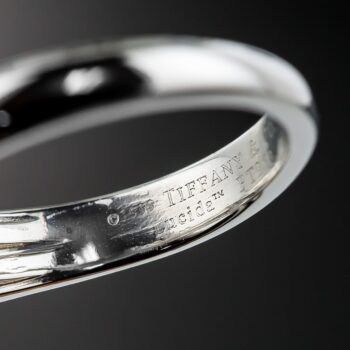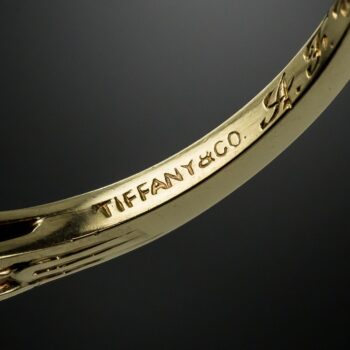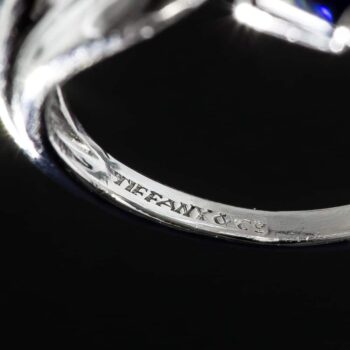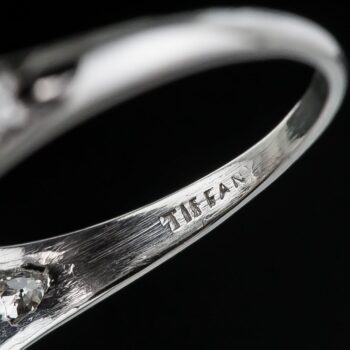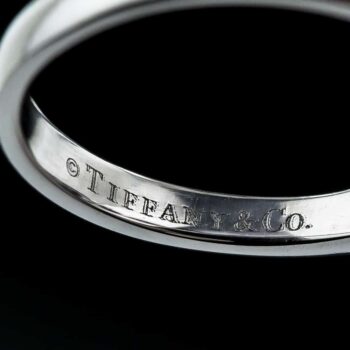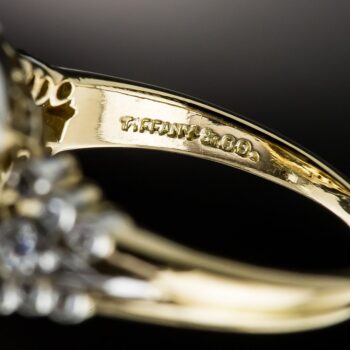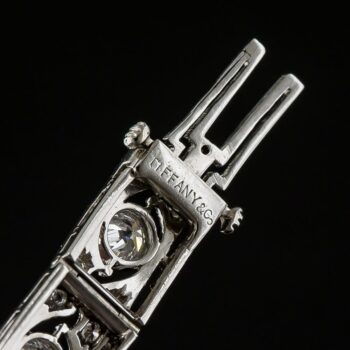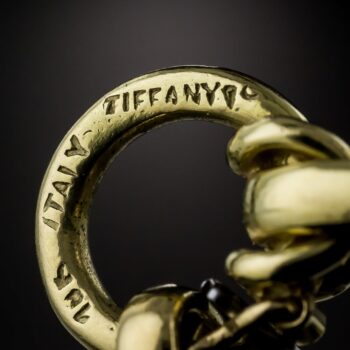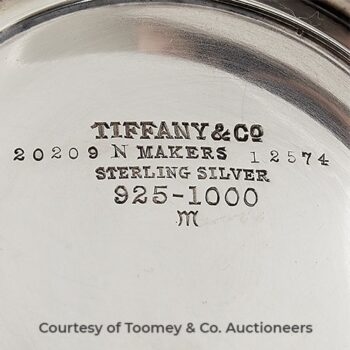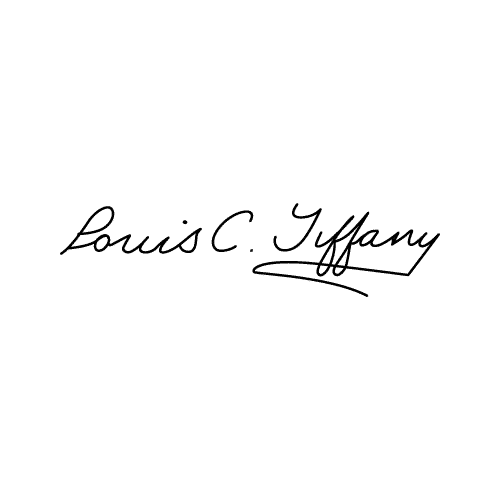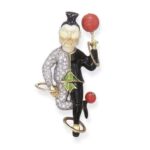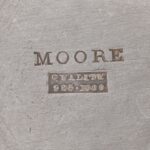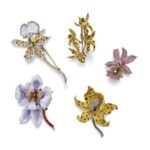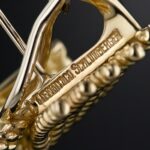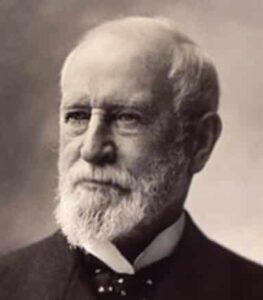
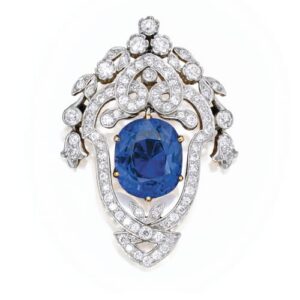
Photo Courtesy of Sotheby’s.
In 1837, Tiffany & Co., the most renowned of American jewelers, opened its doors in New York City as Tiffany & Young. Its specialties were fancy goods and stationery. While initially carrying only a small selection of jewelry, most of which was costume, owners Charles Lewis Tiffany and John P. Young soon expanded their business to fine jewelry imported from Europe. In 1848, Young turned up in Paris for a buying trip whilst France’s second revolution raged. Nobles, loyal to King Louis-Phillipe and desperate to flee Paris, sold their diamonds to him at heavily discounted rates and in large quantities.
Thereafter diamonds were an integral part of Tiffany’s stock. In 1850, Tiffany opened an office in Paris at 79 Rue de Richelieu. Its presence in Paris allowed the firm to keep abreast of the newest trends from Europe. In 1853, Charles Lewis Tiffany gained sole control of the firm and changed its name to the more familiar, Tiffany & Co. In 1870, the firm opened its famous Union Square location in New York.
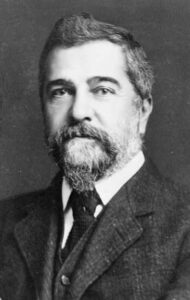
As the century wore on, Tiffany became a trendsetter in its own right. George Frederick Kunz secured a steady supply of unusual gemstones for the firm’s jewelry: Montana sapphires, Mexican turquoise and fire opals, tourmalines from New England and demantoid garnets from Russia. Edward Moore and Paulding Farnham, Tiffany’s designers, turned to historical sources for design inspiration as well as to so-called exotic cultures and, most simply, to nature. Their innovative work won acclaim at international expositions (Paris 1878, 1884, 1889, 1900; Chicago 1893). At the 1900 Paris Exposition, the firm won the Grand Prize for jewelry. It was the first time an American firm was bestowed with this honor. The prize-winning collection featured North American gemstones and motifs, including “an Aztec collar of gold in which Mexican fire opals…daringly juxtaposed with red tourmalines” and “an astonishing tiara composed of tiers of ever-expanding scrollwork…set with turquoise from New Mexico.”1
Louis Comfort Tiffany, Charles’s heir, further enhanced the firm’s reputation for innovative design and helped to usher in the Art Nouveau era in decorative arts and jewelry. His pieces were often inspired by nature; dragonflies and Queen Anne’s Lace were among his favorite subjects. Softly colored enamels and mixtures of precious and semi-precious gemstones embellish many of his pieces. After his father died in 1902, Louis Comfort Tiffany assumed control of the firm and became Tiffany’s first Director of Design. He led the firm through the Art Deco era and into the Retro age. In 1933, Lewis Comfort Tiffany died.
It was not until 1955 that a new director of design was found. In 1955, newly minted company president Walter Hoving hired Van Day Trueux for the position. The New York Herald Tribune called Trueux, “splendidly opinionated, emphatically outspoken, and dead right”.2 It was Trueux’s idea to invite Jean Schlumberger, a well-connected socialite and previously a fashion jewelry designer for Elsa Schiaparelli, to create individualized pieces for Tiffany. The choice was an unqualified success. Schlumberger brought famous friends and a strong sense of whimsy to the company. His signature pieces featured animal motifs embellished with bold enamel and large, bright gemstones. He also created Tiffany’s classic ribbed and studded “X” bangles. When Schlumberger departed, the firm continued to feature individual designers. In the last half of the twentieth century, designers like Donald Claflin (1965-1977), Angela Cummings (late 60’s-early 80’s), Elsa Peretti (1974-present), Paloma Picasso (1980-present), and now Frank Gerhy (2005-present) have kept Tiffany’s image, and inventory, fresh.
Update 2021:
Tiffany & Co. was acquired by LVMH Moët Hennessy Louis Vuitton.
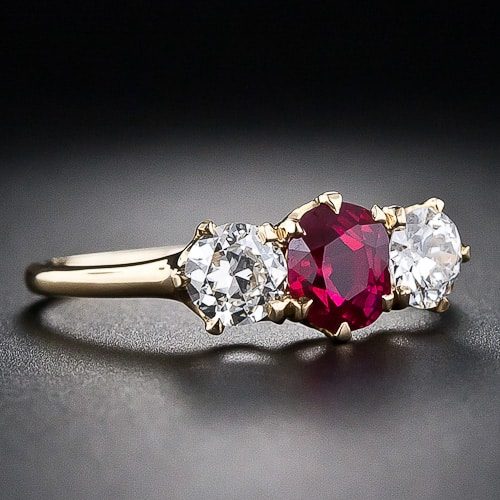
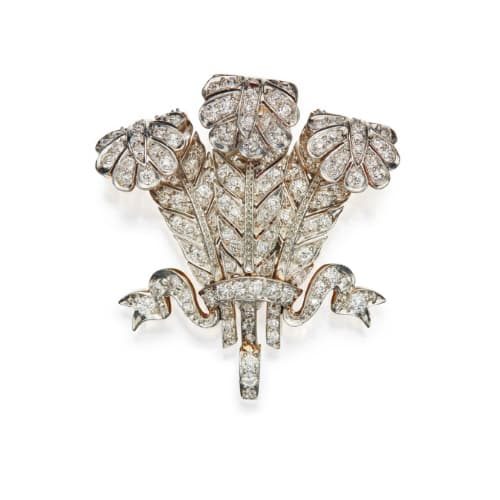
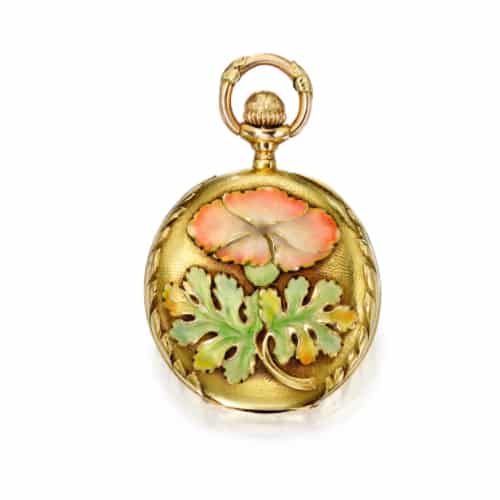
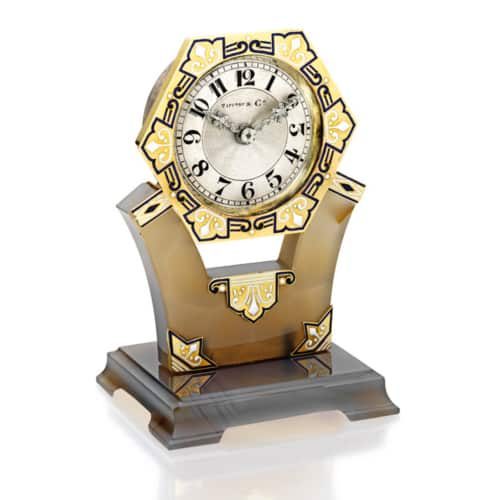
Update 2021:
Tiffany & Co. was acquired by LVMH Moët Hennessy Louis Vuitton for about $16 billion.
Maker's Marks & Timeline
Tiffany & Co.
| Country | |
|---|---|
| City | New York NY |
| Symbol | cartouche, circle, frame, oval |
| Shape | cartouche, circle, frame, oval |
| Era | e.1837 |
Specialties
Founder: Charles Tiffany
- Tiffany, Young & Ellis
- Tiffany & John P. Young
- 259 Broadway NY
- 550 Broadway NY
- Manufacturer
Designers:
- Paulding Farnham
- Edward Moore
1837
- J.L. Ellis joined the firm
1842
- Importing of gold jewelry from Europe for sale in America.
1847-1854
- Importers of goods from England, France, Germany, Italy & Switzerland
- Gold & Diamond jewelry of their own design.
1848
- John Young in Paris took advantage of the fall of Louis Philippe and purchased the court€™s jewelry and enough diamonds to keep the firm going for years to come.
- Charles Tiffany became known as the king of diamonds.
1850
- Paris branch opened at Rue de Richelieu
1856
- Pieces a Hartford Connecticut historic oak tree, felled in a storm, were used by Tiffany to make patriotic carvings for jewelry.
1858
- Tiffany bought the last, unused 20 miles of the transatlantic cable and created souvenir jewelry.
- Office and Watch Manufacturing in Geneva, Switzerland.
- Incorporated as a full-fledged manufacturer.
1862 Civil War
- During the Civil War, they provided Swords, uniform laces, epaulets, ornaments and medals and badges, caps, rifles, and shoes. The profits enabled Tiffany & Co. to return to making jewelry and silverware after the war as a major player.
1867 Paris Exposition
- Tiffany won first prize for its silverware, the first ever for the United States.
1870
- Moves to West Union Square at 15th with workshops and retail space.
1872
- London Branch.
1878 Paris Exposition
- Tiffany & Co. won the Grand Prix for silverware, a gold medal for its architectural revival jewelry and 6 other medals.
- Tiffany premiered its Mixed Metalware in the Japanese style to great acclaim.
1879
- Tiffany Diamond
- Tiffany & Co. purchased a 287.42 carat rough yellow diamond from South Africa and had it cut in Paris resulting in the largest flawless yellow diamond to that date.
- Until 1880 Sole distribution of Patek Philippe & Co. in USA.
1885
- Paulding Farnham becomes Edward Moore’s assistant.
1886
- Tiffany & Co. develops the six-prong setting to hold a diamond known ever after as the “Tiffany Setting”
1887
- Tiffany & Co. purchased 24 lots of Empress Eugenie’s diamond jewelry from the French government.
1889 Paris Exposition
- George Kunz assembled a collection of rare minerals and gems for exhibit at the Paris Exposition along with the jewelry made by Tiffany & Co.
- Tiffany introduces an American collection of jewelry and ornaments inspired by American art and resources such as Tennessee Pearls, Montana Sapphires Arizona Garnets, Colorado Rock Crystal, Mexican Opal.
- Tiffany & Co.’s enamel orchids displayed at this Exposition inspired a revival of enamel jewelry.
1893 World’s Columbian Exposition
- Tiffany exhibited more American-influenced pieces with colored stones along with internationally-influenced items
1900 Paris Exposition
- Tiffany exhibited American-made jewels with American and historical motifs.
c.1950: 727 Fifth Ave. New York 22, NY
2021: Tiffany & Co. Acquired by LVMH Moët Hennessy Louis Vuitton.
- TIFFANY
- TIFFANY & CO.
- T&Co.
Tiffany Studios
| Country | |
|---|---|
| Era | 1879-1936 |
Tiffany, Louis Comfort
| Country | |
|---|---|
| City | New York NY |
Specialties
- Son of Charles Louis Tiffany.
1878
- Louis C. Tiffany & Associated Artists.
1881
- Patented opalescent window glass.
1885
- Opened the Tiffany Glass Company.
1894
- Patented Favrile Glass.
1900
- Grand Prize at the International Exhibition, Paris.
c.1902
- Went to work in the design department at Tiffany & Co.
- First Director of Design for Tiffany & Co.
Motifs
- Dragonflies
- Flowers
- Vines
- Mythology
Mediums
- Enamel
- Gemstones
1933
- Death of Louis Comfort Tiffany.
Related Reading
Sources
- Becker, Vivenne. “The Tiffany Names: Tiffany and the Cult of the Individual Designer-Jeweller.” In Bejewelled by Tiffany, ed. Clare Phillips, 82-99. New Haven: Yale University Press, 2006.
- Phillips, Clare. Bejewelled by Tiffany: 1837-1987. New Haven: Yale University Press, 2006.
- Loring, John. Tiffany Jewels. New York: Harry N. Abrams, 1999.
Online Books
- Heydt (1893), Charles L. Tiffany and the House of Tiffany & Co
